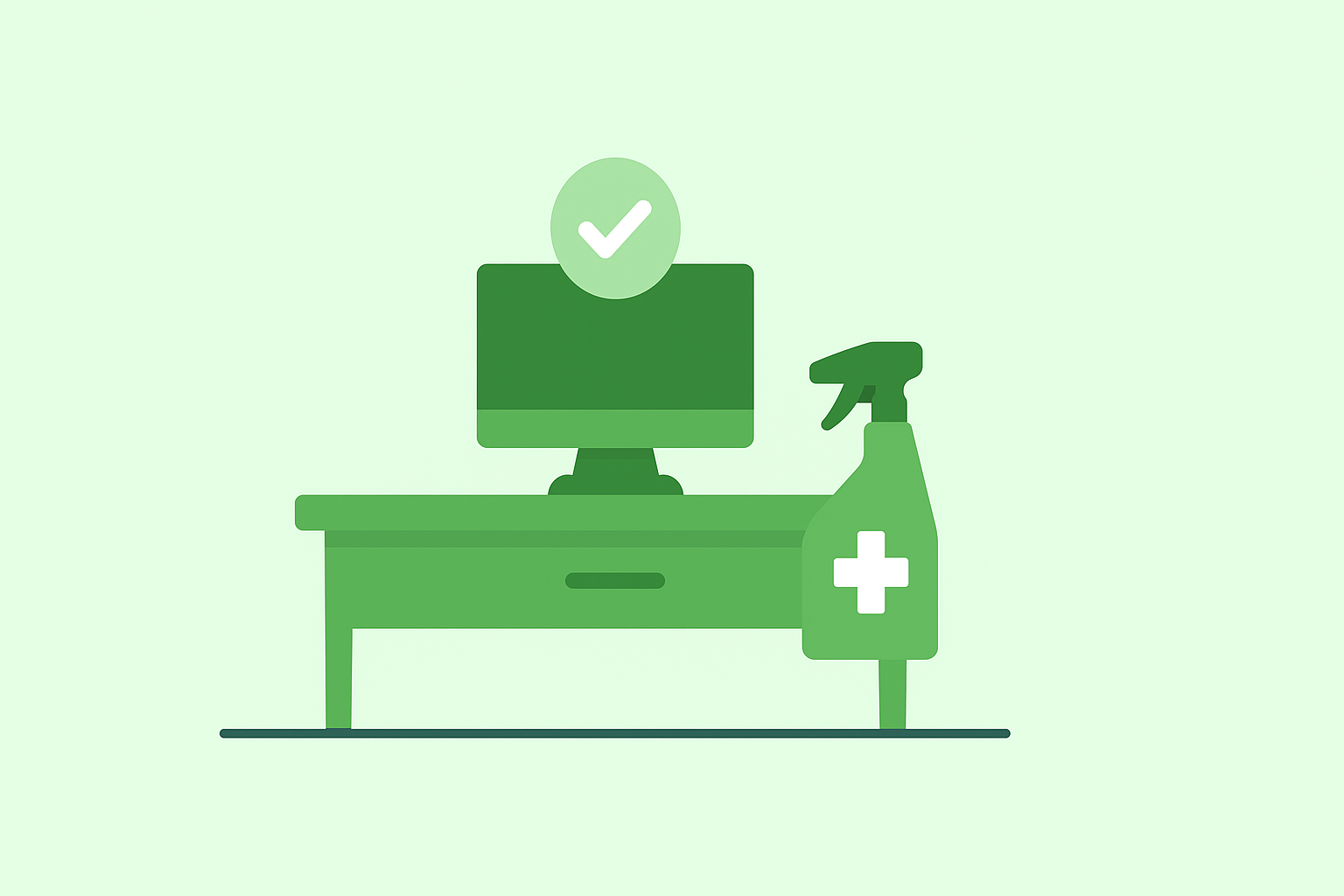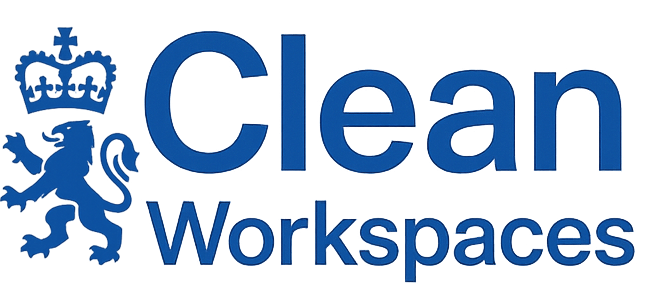Surface Testing Methods: Ensuring Cleaning Efficacy
Verification techniques to confirm your cleaning protocols are achieving optimal results

The implementation of hygiene protocols is only the first step in maintaining a truly clean workplace. Without proper verification methods, organizations cannot confirm whether their cleaning efforts are achieving the intended results. This article explores the most effective surface testing techniques to ensure cleaning efficacy.
Why Surface Testing Is Essential
Visual inspection alone is inadequate for evaluating cleaning effectiveness. Modern surface testing methods provide quantifiable data on cleaning performance, enabling organizations to:
- Verify compliance with established cleaning standards
- Identify areas requiring additional attention or protocol adjustments
- Demonstrate due diligence in maintaining hygiene standards
- Train cleaning staff using objective performance metrics
- Optimize resource allocation based on empirical results
According to our research on cleaning agent effectiveness, organizations implementing regular surface testing protocols experience a 34% improvement in overall cleaning efficacy compared to those relying solely on visual inspection.
ATP Testing: The Gold Standard
Adenosine Triphosphate (ATP) testing has emerged as the most widely adopted method for surface cleanliness verification in commercial settings.
How ATP Testing Works:
- A swab sample is collected from the target surface
- The swab is inserted into a luminometer device
- The device measures the amount of ATP present on the surface
- Results are displayed in Relative Light Units (RLUs)
- The RLU reading indicates the level of biological residue present
ATP testing detects organic residues from all biological sources, including microorganisms, food residue, and other organic matter. This makes it particularly valuable for assessing surface cleanliness in environments where these contaminants pose risks.
Interpreting ATP Results
While ATP testing standards vary by industry and application, general guidelines for interpretation include:
| RLU Range | Interpretation | Recommended Action |
|---|---|---|
| 0-100 | Excellent - Surface effectively cleaned | Maintain current protocols |
| 101-200 | Good - Generally acceptable | Monitor for consistency |
| 201-500 | Caution - Potential issues | Review cleaning procedures |
| 501+ | Fail - Unacceptable contamination | Immediate re-cleaning required |
For more detailed guidance on implementing ATP testing protocols, refer to our Surface Disinfection Protocols guideline, which includes industry-specific RLU thresholds.
Ultraviolet (UV) Inspection Systems
UV inspection provides a visual method for evaluating surface cleanliness, particularly valuable for large surface areas and training purposes.
UV Inspection Methodology:
- Apply a UV-sensitive marker or gel to high-touch surfaces before cleaning
- Conduct normal cleaning procedures
- Use a UV light to identify areas where the marker remains visible
- Areas where the marker persists indicate incomplete cleaning
- Document findings for training and protocol improvement
UV inspection systems are particularly effective for training cleaning staff, as they provide immediate visual feedback on cleaning thoroughness and can identify commonly missed areas.
Implementation Tip
For maximum effectiveness, implement "secret shopper" style UV marker placement, where cleaning staff are unaware which surfaces have been marked. This provides a more realistic assessment of routine cleaning effectiveness.
Microbial Surface Sampling
For environments requiring the highest hygiene standards, microbial sampling provides the most comprehensive assessment of surface cleanliness.
Common Microbial Sampling Methods:
Contact Plates/RODAC Plates
Agar plates pressed directly against surfaces to collect and grow microorganisms for colony counting.
Best For:
- • Flat, non-porous surfaces
- • Targeted pathogen testing
- • Environments requiring precise quantification
Swab Sampling
Sterile swabs used to collect samples from surfaces, then cultured on appropriate media.
Best For:
- • Irregular or textured surfaces
- • Hard-to-reach areas
- • Specialized environmental testing
Microbial sampling is typically recommended for healthcare environments, food preparation areas, and other critical settings where specific pathogen control is essential.
For guidance on implementing microbial sampling protocols, refer to our Hand Hygiene Compliance Practice Note, which includes detailed sampling methodologies.
Rapid Protein Testing
Protein residue testing provides a quick, cost-effective method for detecting protein-based contamination, particularly valuable in food service environments.
How Protein Testing Works:
- A swab collects material from the target surface
- The swab is exposed to a reagent that changes color in the presence of protein
- Color intensity indicates the amount of protein residue present
- Results are available within minutes without specialized equipment
Protein testing is particularly suitable for food preparation areas, cafeterias, and other environments where food residue is a primary concern.
Developing a Comprehensive Testing Protocol
The most effective approach to surface testing combines multiple methods within a structured protocol:
- Define test locations: Identify and document specific high-risk and high-touch surfaces for regular testing
- Establish benchmarks: Determine acceptable thresholds for each testing method based on industry standards and organizational requirements
- Create a testing schedule: Implement a regular testing cadence with increased frequency for critical areas
- Document results: Maintain comprehensive records of all testing outcomes
- Implement corrective actions: Develop specific response protocols for failed tests
- Review and revise: Regularly analyze testing data to identify trends and opportunities for improvement
Sample Testing Protocol Framework
[Table illustrating a structured testing protocol with surface categories, testing methods, frequency, and responsible parties for different facility types]
For assistance developing a customized testing protocol for your facility, our Implementation Training Course includes protocol development workshops.
Technology Innovations in Surface Testing
Recent advancements have expanded the options available for surface cleanliness verification:
- Real-time ATP monitoring systems: Connected devices that automatically log and analyze results, identifying trends and generating alerts
- Fluorescent imaging analysis: Advanced imaging systems that quantify the coverage and effectiveness of disinfection processes
- Rapid PCR testing: Systems that can identify specific pathogens within hours rather than days
- Smartphone-based readers: Portable systems that use smartphone cameras and specialized apps to analyze and document test results
Our Technology-Enhanced Cleaning Solutions article explores these innovations in greater detail.
Conclusion: The Value of Verification
Surface testing transforms cleaning from a process-focused activity to a results-oriented system. By implementing appropriate testing protocols, organizations can:
- Verify compliance with established standards
- Identify opportunities for protocol improvement
- Provide objective feedback for cleaning staff
- Demonstrate commitment to evidence-based hygiene practices
- Optimize resource allocation based on empirical data
As hygiene standards continue to evolve, the organizations that implement robust verification methods will be best positioned to maintain consistently clean, healthy environments for their employees and visitors.
Related Articles
Technology-Enhanced Cleaning Solutions
Exploring innovative cleaning technologies for modern workplaces.
Infection Control Best Practices
Specialized hygiene protocols for managing transmission risks.
Creating an Effective Workplace Hygiene Policy
Guidance for developing comprehensive hygiene standards.
Testing Equipment
Need recommendations on surface testing equipment for your facility?
Request Consultation